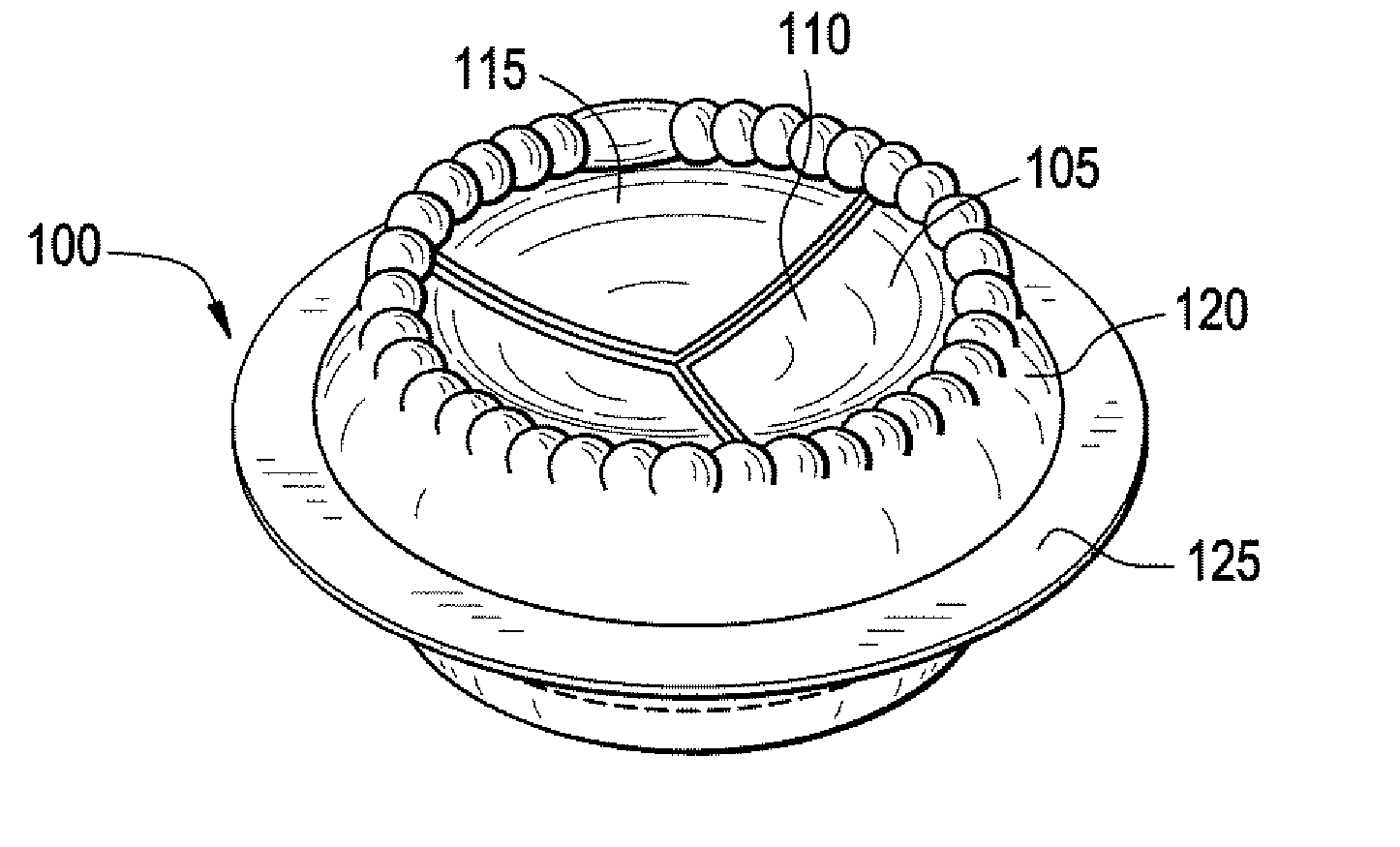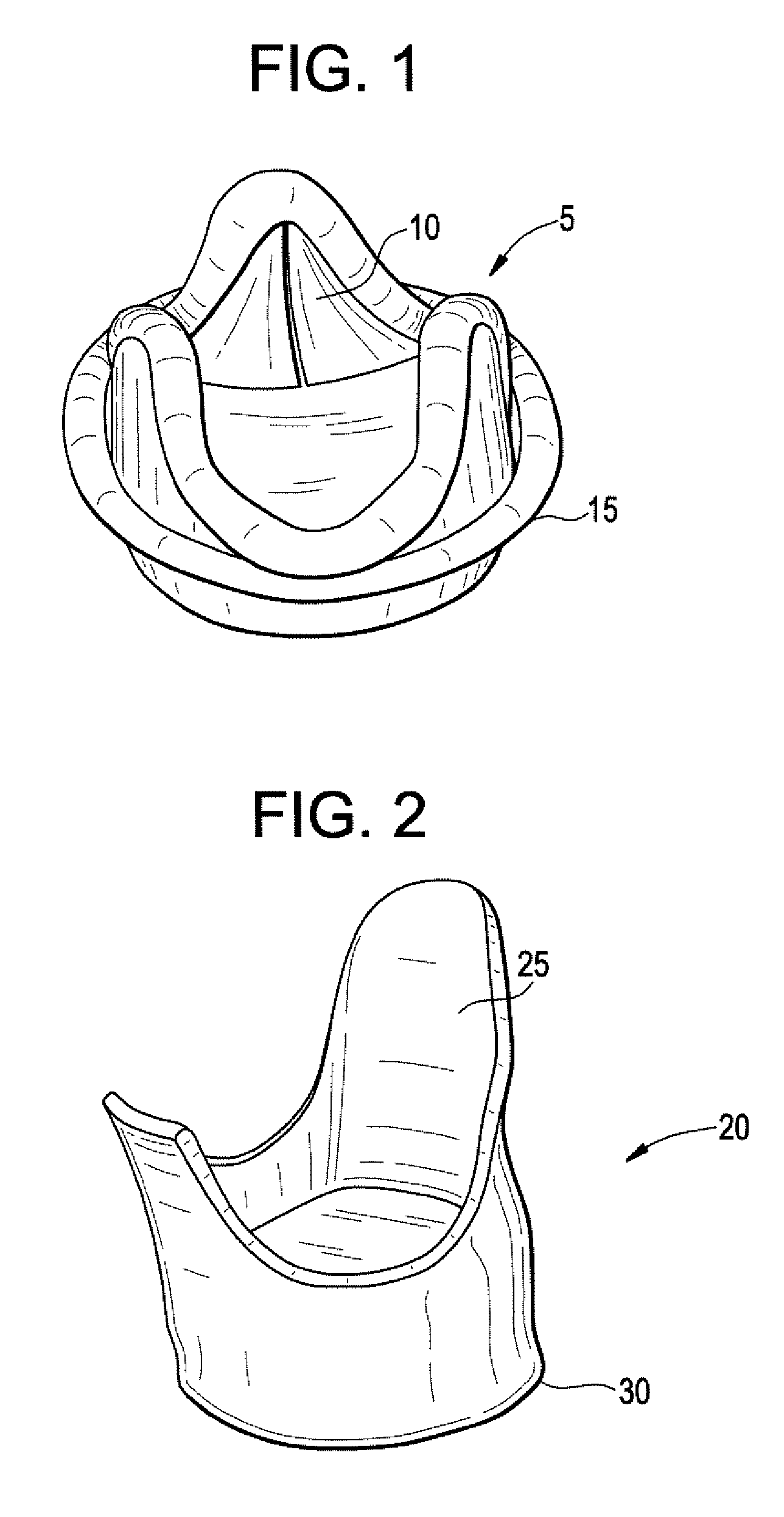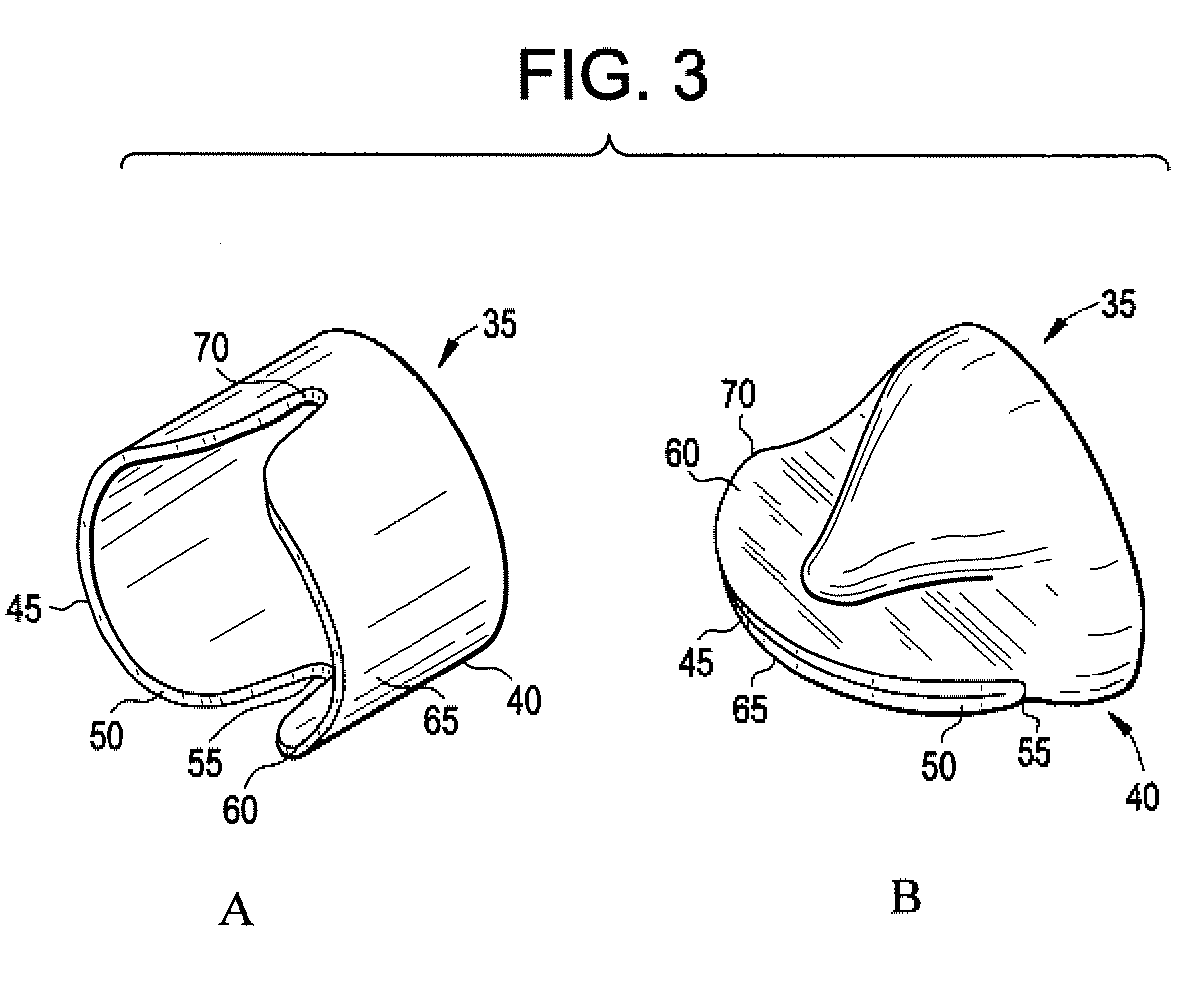Bioprosthetic Heart Valve With Polyphosphazene
a bioprosthetic heart valve and polyphosphazene technology, applied in the field of bioprosthetic heart valves, can solve the problems of mechanical heart valves producing annoying valve “clicking” sound, natural heart valve dysfunction, etc., and achieve the effects of improving antithrombogenic, biocompatibility, or hemocompatibility properties
- Summary
- Abstract
- Description
- Claims
- Application Information
AI Technical Summary
Benefits of technology
Problems solved by technology
Method used
Image
Examples
example 1
[0067] A heart valve is extracted from a human or other mammal and subjected to a rinse in a dehydrating agent / solvent prior to treatment. The rinsed heart valve is then pre-treated by contacting with fixing agent such as an amine, polyamine, aminosilane, and the like. The pretreated heart valve is then immersed into a solution of solution of poly[bis(trifluoroethoxy)phosphazene] polymer in acetone or THF solvent, after which the treated valve is allowed to dry. Following this coating step, the treated valve is again hydrated and stored in a nutrient or saline solution, and further conditioned, sterilized, stored, and used in a manner according to the use of any graft-type heart valve utilized as a bioprosthetic implant.
example 2
[0068] A poly[bis(trifluoroethoxy)phosphazene] polymer having an average molecular weight of from about 10×106 g / mol to about 2×107 g / mol is prepared according to U.S. Patent Application Publication No. 2003 / 0157142. A solution of the poly[bis(trifluoroethoxy)phosphazene] that contains the polyphosphazene in a concentration from about 0.1% to about 99% is prepared in a solvent such as methylethylketone, along with a fixing agent such as formaldehyde or glutaraldehyde and a surfactant. The surfactant may be selected from a polysorbate or a poloxamer, a polyethylene imine, or a polyallylamine, and the like, as disclosed herein. Alternatively, formaldehyde or glutaraldehyde may serve as the solvent and the fixing agent without the need for an additional solvent, as described herein. Also alternatively, either the solvent or the fixing agent may also serve as a surfactant, without the need for additional surfactant.
[0069] A porcine graft-type heart valve is dipped into the poly[bis(tri...
example 3
[0070] A pressurizable container, such as a lecture bottle, pressure tin, or autoclave, closed with a brass body, mini gas regulator, and containing about 250 mL / 150 g of dimethyl ether, is cooled externally with a solid CO2 / ethanol cooling bath (or alternatively, with a liquid N2 bath) to a temperature to below its boiling point (−23° C.) but above its melting temperature (−138.5° C.). Using proper safety precautions (protecting screen / shield, ventilation), the gas regulator is opened after internal pressure has been equalized to atmospheric pressure by slowly opening the valve, and the regulator is then removed. A solid sample of poly[bis(trifluoroethoxy)phosphazene] polymer, 1.25 g, (0.5% w / v) is quickly added to the contents of the container, and the pressurizable container is then sealed airtight. The polyphosphazene sample is then dissolved in the dimethyl ether over a time period of 24 hours at room temperature, using a horizontal shaker to agitate the contents of the pressur...
PUM
| Property | Measurement | Unit |
|---|---|---|
| thickness | aaaaa | aaaaa |
| contact time | aaaaa | aaaaa |
| contact time | aaaaa | aaaaa |
Abstract
Description
Claims
Application Information
 Login to View More
Login to View More - R&D
- Intellectual Property
- Life Sciences
- Materials
- Tech Scout
- Unparalleled Data Quality
- Higher Quality Content
- 60% Fewer Hallucinations
Browse by: Latest US Patents, China's latest patents, Technical Efficacy Thesaurus, Application Domain, Technology Topic, Popular Technical Reports.
© 2025 PatSnap. All rights reserved.Legal|Privacy policy|Modern Slavery Act Transparency Statement|Sitemap|About US| Contact US: help@patsnap.com



